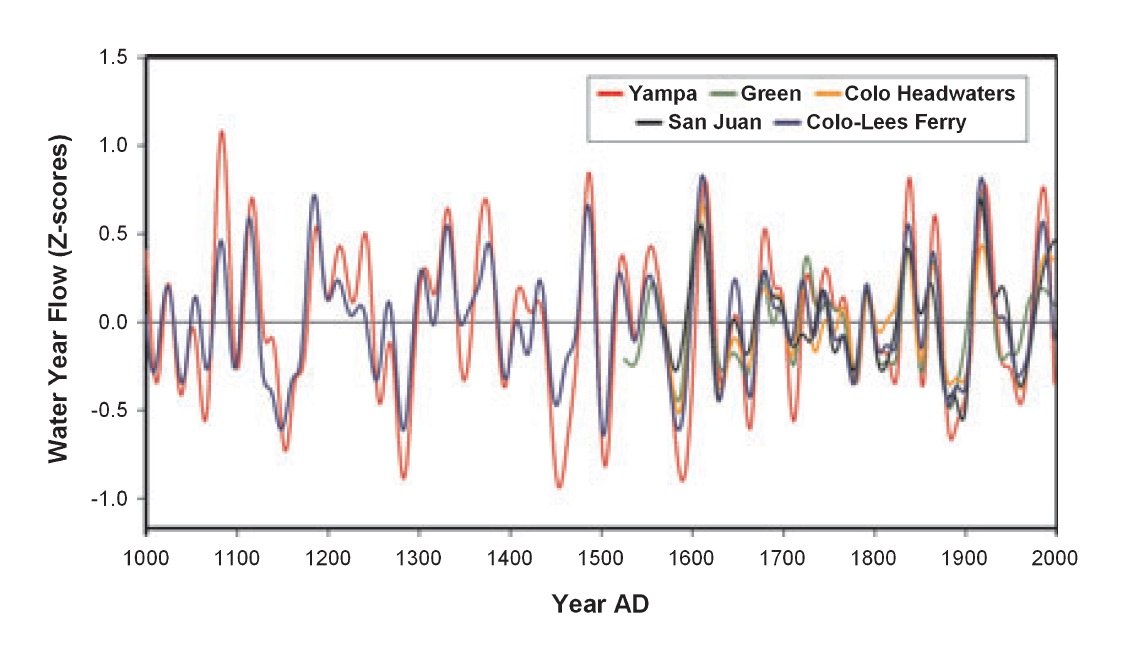Because it’s hard to resist the word “megadrought” – or, frankly, the concept:
Tree rings from the headwaters of the Rio Grande show a 50-year drought from 122 to 172 AD, suggesting that “megadroughts” may be a recurring feature of the region’s climate, according to new research by a University of Arizona team.
Scientists have long known about similar drought a thousand years later that has been linked to the end of the early Native American culture of Chaco Canyon and the Four Corners area. But it was never clear whether that drought was unique.
The new evidence, being published in the journal Geophysical Research Letters, comes from a grove of bristlecone pine found by University of Arizona graduate student Cody Routson in the mountains near Summitville, Colo. He initially spotted the trees through binoculars during the summer of 2007, and returned in later years to take samples used to show the trees’ year-by-year growth.
Plus, I have an inordinate fondness for the tales tree rings tell.



